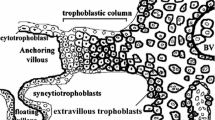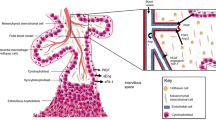Abstract
The placental growth factor (PlGF) is an angiogenic protein belonging to the vascular endothelial growth factor (VEGF) family, which was discovered in 1991 by an Italian scientist, Maria Graziella Persico. Dr Persico cloned and purified PlGF and determined its structure by crystallography resolution. Furthermore, she identified VEGF receptor-1 (VEGFR-1) as the receptor for PlGF, and in collaboration with Dr Peter Carmeliet in Leuven, she generated evidence that loss of PlGF does not affect development, reproduction, or postnatal life. PlGF is expressed primarily in the placenta and is up-regulated in several pathological conditions, although its role is still controversial. Some data in literature reported that PlGF enhances pathological angiogenesis by initiating a cross-talk between VEGFR-1 and VEGFR-2, whereas other studies did not confirm these findings. Regarding the potential therapeutic employment of PlGF, recent evidence has shown that an anti-PlGF antibody may act as a potent antiangiogenic agent, and that it has the advantage of minor toxicity when combined with anti-VEGF strategies.




Similar content being viewed by others
References
Maglione D, Guerriero V, Viglietto G, Delli-Bovi P, Persico MB (1991) Isolation of human placenta cDNA coding for a protein related to the vascular permeability factor. Proc Natl Acad Sci U S A 88:9267–9271. doi:10.1073/pnas.88.20.9267
Iyer S, Leonidas DD, Swaminathan GJ, Maglione D, Battisti M, Tucci M et al (2001) The crystal structure of human placental growth factor-1 (PlGF), an angiogenic protein at 2 Å resolution. J Biol Chem 276:12153–12161. doi:10.1074/jbc.M008055200
Maglione D, Guerriero V, Viglietto G, Ferraro MG, Aprelikova O, Alitalo K et al (1993) Two alternative mRNAs coding for the angiogenic factor, placenta growth factor (PlGF), are transcribed from a single gene of chromosome 14. Oncogene 8:925–931
Cao Y, Ji WR, Qi P, Rosin A, Cao Y (1997) Placenta growth factor: identification and characterization of a novel isoform generated by mRNA alternative splicing. Biochem Biophys Res Commun 235:493–498. doi:10.1006/bbrc.1997.6813
Yang W, Ahm H, Hinrichs M, Torry RJ, Torry DS (2003) Evidence of a novel isoform of placenta growth factor (PlGF-4) expressed in human throphoblast and endothelial cells. J Reprod Immunol 60:53–60. doi:10.1016/S0165-0378(03)00082-2
Migdal M, Huppertz B, Tessler S, Comforti A, Shibuya M, Reich R et al (1998) Neuropilin-1 is a placenta growth factor-2 receptor. J Biol Chem 273:22272–22278. doi:10.1074/jbc.273.35.22272
Miao HQ, Soker S, Feiner L, Alonso JL, Raper JA, Klagsbrun M (1999) Neuropilin-1 mediates collapsin-1/ semaphorin III inhibition of endothelial cell motility: functional competion of collapsin-1 and vascular endothelial growth factor-165. J Cell Biol 146:233–242
Khaliq A, Li XF, Shams M, Sisi P, Acevedo CA, Whittle MJ et al (1996) Localisation of placenta growth factor (PlGF) in human term placenta. Growth Factors 13:243–250. doi:10.3109/08977199609003225
Vuorela P, Hatva E, Lymboussaki A, Kaipanen A, Joukov V, Persico MG et al (1997) Expression of vascular endothelial growth factor and placenta growth factor in human placenta. Biol Reprod 56:489–494. doi:10.1095/biolreprod56.2.489
Achen MG, Gad JM, Stacker SA, Wilks AF (1997) Placenta growth factor and vascular endothelial growth factor are co-expressed during early embryonic development. Growth Factors 15:69–80
Persico MG, Vincenti V, Di Palma T (1999) Structure, expression and receptor-binding properties of placenta growth factor (PlGF). Curr Top Microbiol Immunol 237:31–40
Voros G, Maquoi E, Demeuelemeester D, Clerx N, Collen D, Lijnen HR (2005) Modulation of angiogenesis during adipose tissue development in murine models of obesity. Endocrinology 146:4545–4554. doi:10.1210/en.2005-0532
Carmeliet P, Moons L, Luttun A, Vincenti V, Compernolle V, De Mol M et al (2001) Synergism between vascular endothelial growth factor and placenta growth factor contributes to angiogenesis and plasma extravasation in pathological conditions. Nat Med 7:575–583. doi:10.1038/87904
Lijnen HR, Christiaens V, Scroyen I, Voros G, Tjwa M, Carmeliet P et al (2006) Impaired adipose tissue development in mice with inactivation of placental growth factor function. Diabetes 55:2698–2704. doi:10.2337/db06-0526
Ziche M, Maglione D, Ribatti D, Morbidelli L, Lago CT, Battisti M et al (1997) Placenta growth factor-1 is chemotactic, mitogenic and angiogenic. Lab Invest 76:517–531
Luttun A, Tjwa M, Moons L, Wu Y, Angelillo-Scherrer A, Liao F et al (2002) Revascularization of ischemic tissues by PlGF treatment, and inhibition of tumor angiogenesis, arthritis and atherosclerosis by anti-Flt1. Nat Med 8:81–840. doi:10.1038/nm0102-81
Autiero M, Waltenberger J, Communni D, Kranz A, Moons L, Lambrechts D et al (2003) Role of PlGF in the intra- and inter-molecular cross talk between the VEGF receptors Flt1 and Flk1. Nat Med 9:936–943. doi:10.1038/nm884
Viita H, Markkanen J, Eriksson E, Nurminen M, Kinnunen K, Babu M et al (2008) 15-Lipoxygenase-1 prevents vascular endothelial growth factor-A- and placental growth factor-induced angiogenic effects in rabbit skeletal muscles via reduction in growth factor mRNA levels, NO bioactivity, and downregulation of VEGF receptor 2 expression. Circ Res 102:177–184. doi:10.1161/CIRCRESAHA.107.155556
Odorisio T, Schietroma C, Zaccaria ML, Cianfarani F, Tiveron C, Tatangelo L et al (2002) Mice overexpressing placenta growth factor exhibit increased vascularization and vessel permeability. J Cell Sci 115:2559–2567
Inoue N, Kondo T, Kobayashi K, Aoki M, Numaguchi Y, Shibuya M et al (2006) Therapeutic angiogenesis using novel vascular endothelial growth factor-E/human placental growth factor chimera genes. Arterioscler Thromb Vasc Biol 27:99–105. doi:10.1161/01.ATV.0000251504.61247.d5
Zheng Y, Murakami M, Takahashi H, Yamauchi M, Kiba A, Yamaguchi S et al (2006) Chimeric VEGF-ENZ7/PlGF promotes angiogenesis via VEGFR-2 without significant enhancement of vascular permeability and inflammation. Arterioscler Thromb Vasc Biol 26:2019–2026. doi:10.1161/01.ATV.0000233336.53574.a1
Bottomley MJ, Webb NJ, Watson CJ, Holt L, Bukhari M, Denton J et al (2000) Placenta growth factor (PlGF) induces vascular endothelial growth factor (VEGF) secretion from mononuclear cells and is co-expressed with VEGF in synovial fluid. Clin Exp Immunol 119:182–188. doi:10.1046/j.1365-2249.2000.01097.x
Perelman N, Selvaraj SK, Batra S, Luck LR, Erdreich-Epstein A, Coates TD et al (2003) Placenta growth factor activated monocytes and correlates with sickle disease severity. Blood 102:1506–1514. doi:10.1182/blood-2002-11-3422
Cianfarani F, Zambruno G, Brogelli L, Sera F, Lacal PM, Pesce M et al (2006) Placenta growth factor in diabetic wound healing. Altered expression and therapeutic potential. Am J Pathol 169:1167–1182. doi:10.2353/ajpath.2006.051314
Failla CM, Odorisio T, Cianfarani F, Schietroma C, Puddu P, Zambruno G (2000) Placenta growth factor is induced in human keratinocytes during wound healing. J Invest Dermatol 115:388–395. doi:10.1046/j.1523-1747.2000.00085.x
Brown LF, Yeo KT, Berse B, Yeo TK, Senger DR, Dvorak HF et al (1992) Expression of vascular permeability factor (vascular endothelial growth factor) by epidermal keratinocytes during wound healing. J Exp Med 176:1375–1379. doi:10.1084/jem.176.5.1375
Oura H, Bertoncini J, Velasco P, Brown LF, Carmeliet P, Detmar M (2003) A critical role of placental growth factor in the induction of inflammation and edema formation. Blood 101:560–567. doi:10.1182/blood-2002-05-1516
Hattori K, Heissig B, Wu Y, Dias S, Tejada R, Ferris B et al (2002) Placental growth factor reconstitutes hematopoiesis by recruiting VEGFR1(+) stem cells from bone marrow microenvironment. Nat Med 8:841–849
Carlo-Stella C, Di Nicola M, Longoni P, Cleris L, Lavazza C, Milani R et al (2007) Placental growth factor-1 potentiates hematopoetic progenitor cell mobilization induced by granulocyte coloby-stimulating factor in mice and nonhuman primates. Stem Cells 25:252–261. doi:10.1634/stemcells.2006-0020
Cao Y, Chen H, Zhou L, Chiang MK, Anand-Apte B, Weatherbee JA et al (1996) Heterodimers of placenta growth factor/vascular endothelial growth factor. J Biol Chem 271:3154–3162. doi:10.1074/jbc.271.6.3154
Schomber T, Kopfstein L, Djonov V, Albrecht I, Baeriswyl V, Strittmatter K et al (2007) Placental growth factor-1 attenuates vascular endothelial growth factor-A-dependent tumor angiogenesis during β cell carcinogenesis. Cancer Res 67:10840–10848. doi:10.1158/0008-5472.CAN-07-1034
Eriksson A, Cao R, Pawliuk R, Berg SM, Tsang M, Zhou D et al (2002) Placenta growth factor-1 antagonizes VEGF-induced angiogenesis and tumor growth by the formation of functionally inactive PlGF-1/VEGF heterodimers. Cancer Cell 1:99–108. doi:10.1016/S1535-6108(02)00028-4
Bjorndahl M, Cao R, Erikksson A, Cao Y (2004) Blockage of VEGF-induced angiogenesis by preventing VEGF secretion. Circ Res 94:1443–1450. doi:10.1161/01.RES.0000129194.61747.bf
Xu L, Cochran DM, Tong RT, Winkler F, Kashiwagi S, Jain RK (2006) Fukumura D (2007) Placenta growth factor overexpression inhibits tumor growth, angiogenesis, and metastasis by depleting vascular endothelial growth factor homdimers in orthotopic mouse models. Cancer Res 66:3971–3977
Gigante B, Morlino G, Gentile MT, Persico MG, De Falco S (2006) PlGF-/-eNos-/-mice show defective angiogenesis associated with increased oxidative stress in response to tissue ischemia. FASEB J 20:E70–E79. doi:10.1096/fj.05-4481fje
Takahashi A, Sasaki H, Kim SJ, Tobisu K, Kakizoe T, Tsukamoto T et al (1994) Markedly increased amount of messanger RNAs for vascular endothelial growth factor in renal cell carcinoma associated with angiogenesis. Cancer Res 54:4233–4237
Viglietto G, Maglione D, Rambaldi M, Cerutti J, Romano A, Trapasso F et al (1995) Upregulation of vascular endothelial growth factor (VEGF) and downregulation of placenta growth factor (PlGF) associated with malignancy in human thyroid tumors and cell lines. Oncogene 11:1569–1579
Viglietto G, Romano A, Maglione D, Rambaldi M, Paoletti I, Lago CT et al (1996) Neovascularization in human germ cell tumors correlates with a marked increase in the expression of the vascular endothelial growth factor but not the placenta growth factor. Oncogene 13:577–587
Matsumoto K, Suzuki K, Kolke H, Okamura K, Tsuchiya K, Uchida T et al (2003) Prognostic significance of plasma placental growth factor levels in renal cell cancer: an association with clinical characteristics and vascular endothelial growth factor levels. Anticancer Res 23:4953–4958
Chen CN, Hsieh FJ, Cheng YM, Cheng WF, Su YN, Chang KJ et al (2004) The significance of placenta growth factor in angiogenesis and clinical outcome of human gastric cancer. Cancer Lett 213:73–82. doi:10.1016/j.canlet.2004.05.020
Parr C, Watkins G, Boulton M, Cai J, Jiang WG (2005) Placental growth factor is over-expressed and has prognostic value in human breast cancer. Eur J Cancer 41:2819–2827. doi:10.1016/j.ejca.2005.07.022
Wei SC, Tsao PN, Yu SC, Shun CT, Tsai-Wu JJ, Wu CH et al (2005) Placenta growth factor expression is correlated with survival of patients with colorectal cancer. Gut 54:666–672. doi:10.1136/gut.2004.050831
Ho MC, Chen CN, Lee H, Hsieh FJ, Shun CT, Chang CL et al (2007) Placenta growth factor not vascular endothelial growth factor A or C can predict the early recurrence after radical resection of hepatocellular carcinoma. Cancer Lett 250:237–249. doi:10.1016/j.canlet.2006.10.005
Fisher C, Jonckx B, Mazzone M, Zacchigna S, Loges S, Pattarini L et al (2007) Anti-PlGF inhibits growth of VEGF(R)-inhibitor-resistant tumors without affecting healthy vessels. Cell 131:463–475. doi:10.1016/j.cell.2007.08.038
Xu L, Jain RK (2007) Down-regulation of placenta growth factor by promoter hypermethylation in human lung and colon carcinoma. Mol Cancer Res 5:873–880. doi:10.1158/1541-7786.MCR-06-0141
Taylor AP, Goldenberg DM (2007) Role of placenta growth factor in malignancy and evidence that an antagonistic PlGF/Flt-1 peptide inhibits the growth and metastasis of human breast cancer xenografts. Mol Cancer Ther 6:524–531. doi:10.1158/1535-7163.MCT-06-0461
Acknowledgments
This work was supported by grants from the AIRC (Italian Association for Cancer Research, Regional Funds),and MIUR (Italian Ministry of University and Research) (FIRB 2001 and PRIN 2005).
Author information
Authors and Affiliations
Corresponding author
Rights and permissions
About this article
Cite this article
Ribatti, D. The discovery of the placental growth factor and its role in angiogenesis: a historical review. Angiogenesis 11, 215–221 (2008). https://doi.org/10.1007/s10456-008-9114-4
Received:
Accepted:
Published:
Issue Date:
DOI: https://doi.org/10.1007/s10456-008-9114-4




